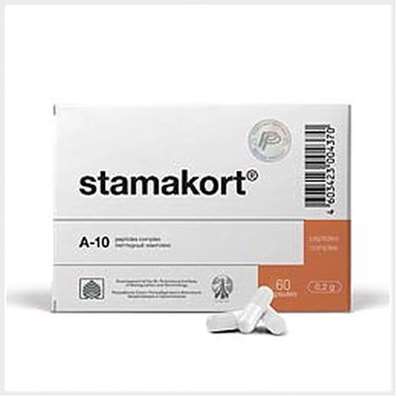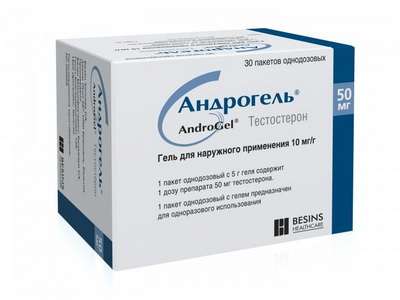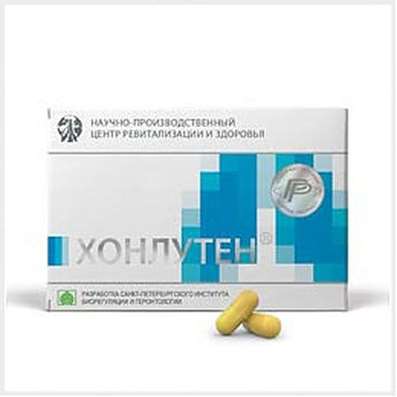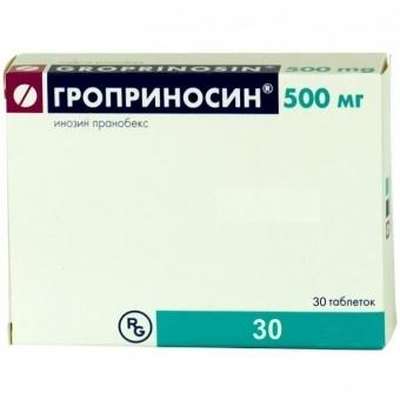Instruction for use: Kipferon
I want this, give me price
Dosage form: Vaginal / rectal suppositories
ATX
L03AX Other immunostimulants
Pharmacological group
Interferons in combinations
The nosological classification (ICD-10)
A02 Other salmonella infections: Salmonella; Salmonellae; Salmonella; Chronic Salmonella Bearing; Salmonella carriage
A09 Diarrhea and gastroenteritis of allegedly infectious origin (dysentery, bacterial diarrhea): Bacterial diarrhea; Bacterial dysentery; Bacterial infections of the digestive tract; Bacterial gastroenteritis; Diarrhea bacterial; Diarrhea or dysentery of amoebic or mixed etiology; Diarrhea of infectious genesis; Diarrhea on the background of antibiotic therapy; Traveler's Diarrhea; Travelers diarrhea due to changes in diet and habitual diet; Diarrhea due to antibiotic therapy; Dysenteric bacteriocarrier; Dysenteric enteritis; Dysentery; Dysentery bacterial; Dysentery mixed; Gastrointestinal infection; GI tract infections; Infectious diarrhea; Infectious Disease of the GI tract; Infection of the gastrointestinal tract; Infection of the biliary tract and gastrointestinal tract; GI tract infection; Summer diarrhea; Nonspecific acute diarrhea of infectious nature; Nonspecific chronic diarrhea of infectious nature; Acute bacterial diarrhea; Acute diarrhea in food poisoning; Acute dysentery; Acute bacterial gastroenteritis; Acute gastroenterocolitis; Acute Enterocolitis; Subacute dysentery; Diarrhea chronic; Refractory diarrhea in AIDS patients; Staphylococcal enteritis in children; Staphylococcal enterocolitis; Toxic diarrhea; Chronic dysentery; Enteritis; Enteritis infectious; Enterocolitis
B00 Infections caused by the herpes simplex virus [herpes simplex]: Herpes simplex; Herpes virus; Herpes simplex virus; Herpes simplex virus type I and II; HSV; Herpes; Herpes simplex / herpes simplex /; Herpes lips; Herpes simplex; Herpes in patients with immunodeficiency; Labial herpes; Acute herpetic disease of the mucous membranes; Herpes simplex; Herpes simplex skin and mucous membranes; Herpes simplex with skin and mucous membrane damage; Recurrent herpes; Urogenital herpetic infection; Chronic recurrent herpesvirus infection; Herpes-viral infections of various localizations
B19 Viral hepatitis, unspecified: Anemia without hepatitis; Viral hepatitis; Viral hepatitis in children; Infection of the liver; Acute liver infection
B34.9 Viral infection, unspecified: Viral infections; Infections viral; Viral respiratory tract infections; Viral infection
J06 Acute upper respiratory tract infections of multiple and unspecified locations: Frequent colds of viral diseases; Infections of ENT organs; Acute respiratory illness of influenza nature; Pain for colds; Acute catarrhal disease; Cold; Colds; Colds; Respiratory infection; Seasonal catarrhal disease; Seasonal colds; Pain in infectious and inflammatory diseases of the upper respiratory tract; Bacterial infections of the upper respiratory tract; Bacterial infections of the respiratory system; Viral respiratory disease; Viral respiratory tract infections; Inflammatory disease of the upper respiratory tract; Inflammatory diseases of the upper respiratory tract; Inflammatory diseases of the upper respiratory tract with difficult to separate sputum; Inflammatory respiratory disease; Secondary infections for colds; Difficult sputum separation in acute and chronic respiratory diseases; Upper respiratory tract infections; Infections of the upper respiratory tract; Respiratory tract infections; Respiratory and lung infections; Infectious-inflammatory diseases of the upper respiratory tract; Infectious-inflammatory diseases of the upper respiratory tract and ENT organs; Infectious-inflammatory diseases of the upper respiratory tract in adults and children; Infectious-inflammatory diseases of the upper respiratory tract; Infectious inflammation of the respiratory tract; Respiratory tract infection; Qatar upper respiratory tract; Catarrh of the upper respiratory tract; Catarrh of the upper respiratory tract; Catarrhal phenomena from the upper respiratory tract; Cough in diseases of the upper respiratory tract; Cough for colds; ARVI; ARI; ARI with phenomena of rhinitis; Acute respiratory infection; Acute infectious-inflammatory disease of the upper respiratory tract; Acute respiratory disease; Persecution in the throat or nose; Respiratory and viral infections; Respiratory diseases; Respiratory infections; Recurrent respiratory tract infections; Secondary infections with influenza; Influenza states; Feverish conditions for influenza
J18 Pneumonia without specification of pathogens: Alveolar pneumonia; Community-acquired pneumonia atypical; Community-acquired pneumonia non-pneumococcal; Pneumonia; Inflammation of the lower respiratory tract; Inflammatory lung disease; Shared pneumonia; Respiratory and lung infections; Infections of the lower respiratory tract; Cough with inflammatory diseases of the lungs and bronchi; Croupous pneumonia; Nosocomial pneumonia; Exacerbation of chronic pneumonia; Acute community-acquired pneumonia; Acute pneumonia; Focal pneumonia; Pneumonia abscessing; Pneumonia bacterial; Pneumonia croupy; Pneumonia of focal; Pneumonia with difficulty in sputum discharge; Pneumonia in AIDS patients; Pneumonia in children; Septic pneumonia; Chronic Obstructive Pneumonia; Chronic pneumonia; Lymphoid interstitial pneumonia
J42 Chronic bronchitis, unspecified: Recurrent bronchitis; Asthmatic bronchitis; Asthmatic bronchitis; Bronchitis chronic; Inflammatory respiratory disease; Disease of the bronchi; Qatar smoker; Cough with inflammatory diseases of the lungs and bronchi; Exacerbation of chronic bronchitis; Chronic bronchitis; Chronic Obstructive Pulmonary Diseases; Chronical bronchitis; Chronic bronchitis of smokers; Chronic spasmodic bronchitis; Allergic bronchitis; Bronchitis allergic
K63.8.0 * Dysbacteriosis: Intestinal lymphangiectasia
N74.4 Female pelvic inflammatory disease caused by chlamydia (A56.1 +): Chlamydial salpingitis; Chlamydial infections; Chlamydia
Z100 * CLASS XXII Surgical practice: Abdominal surgery; adenomectomy; Amputation; Coronary angioplasty; Angioplasty of the carotid arteries; Antiseptic skin treatment for wounds; Antiseptic Hand; Appendectomy; atherectomy; Balloon coronary angioplasty; Vaginal hysterectomy; The coronary bypass; Interventions in the vagina and cervix; Interventions on the bladder; Intervention in the mouth; Restoration and reconstructive surgery; Hand hygiene of medical personnel; Gynecologic surgery; Gynecological intervention; Gynecological surgery; Hypovolemic shock during operations; Disinfection of purulent wounds; Disinfection of wounds edges; Diagnostic intervention; Diagnostic procedures; Cervical Diathermocoagulation; Long-surgery; Replacing the fistula catheters; Infection in orthopedic surgery; Artificial heart valve; cystectomy; Short-term outpatient surgery; Short-term operation; Short surgical procedures; Krikotireotomiya; Blood loss during surgery; Bleeding during surgery and in the postoperative period; Kuldotsentez; laser photocoagulation; laser coagulation; retinal laser coagulation; Laparoscopy; Laparoscopy in Gynecology; CSF fistula; Small gynecological operations; Small surgical procedures; Mastectomy and subsequent plastic; mediastinotomy; Microsurgical operations on the ear; Mukogingivalnye operation; suturing; Minor surgery; neurosurgical operation; Immobilization of the eyeball in ophthalmic surgery; testectomy; pancreatectomy; Perikardektomiya; The period of rehabilitation after surgery; The period of convalescence after surgery; Percutaneous transluminal coronary angioplasty; Pleural thoracentesis; Pneumonia postoperative and posttraumatic; Preparation for surgical procedures; Preparation for surgery; Preparation of the surgeon's hands before surgery; Preparation of the colon for surgical procedures; Postoperative aspiration pneumonia in neurosurgical and thoracic surgery; Postoperative nausea; Postoperative bleeding; postoperative granuloma; postoperative shock; The early postoperative period; myocardial revascularization; Radiectomy; gastric Resection; bowel resection; uterine Resection; liver Resection; enterectomy; Resection of part of the stomach; Reocclusion of the operated vessel; Bonding tissues during surgical procedures; Removal of sutures; Condition after eye surgery; Condition after surgery; Condition after surgery in the nasal cavity; Condition after gastrectomy; Status after resection of the small intestine; Condition after tonsillectomy; Condition after removal of the duodenum; Condition after phlebectomy; Vascular surgery; Splenectomy; Sterilization of surgical instruments; Sterilization of surgical instruments; sternotomy; Dental surgery; Dental intervention in periodontal tissues; strumectomy; Tonsillectomy; Thoracic surgery; Thoracic surgery; total gastrectomy; Transdermal intravascular coronary angioplasty; Transurethral resection; Turbinektomiya; Removal of a tooth; cataract surgery; Removal of cysts; tonsillectomy; Removal of fibroids; Removing the mobile primary teeth; Removing polyps; Removing broken tooth; Removal of the uterus body; Removal of sutures; Fistula likvoroprovodyaschih ways; Frontoetmoidogaymorotomiya; Surgical infection; Surgical treatment of chronic limb ulcers; Surgery; The surgery in the anal area; The surgery on the colon; Surgical practice; The surgical procedure; Surgical interventions; Surgery on the gastrointestinal tract; Surgical procedures on the urinary tract; Surgical procedures on the urinary system; Surgical intervention of the genitourinary system; Surgical procedures on the heart; Surgical manipulation; surgery; Surgery on the veins; Surgical intervention; Vascular surgery; Surgical treatment of thrombosis; Surgery; cholecystectomy; Partial gastric resection; hysterectomy; Percutaneous transluminal coronary angioplasty; Percutaneous transluminal angioplasty; Coronary artery bypass; tooth Extirpation; Extirpation of milk teeth; pulpectomy; pulsative cardiopulmonary bypass; tooth Extraction; teeth Extraction; cataract extraction; Electrocoagulation; endourological intervention; episiotomy; Etmoidotomiya; Complications after tooth extraction
Composition and release form
Suppositories 1 supp.
Interferon human recombinant alpha-2 not less than 500,000 IU
Complex immunoglobulin preparation dry (KPI) 60 mg
Auxiliary substances: fat; paraffin; Emulsifier T-2
In a planar cell pack of 10; In a pack of cardboard 1 package.
Characteristic
Combination of recombinant human interferon alpha-2 and complex immunobiological preparation (TRC), containing immunoglobulins of the main three classes G, A, M.
Pharmachologic effect
Mode of action - antiviral, anti-inflammatory, immunomodulating, antibacterial, anti-chlamydial.
The drug combines the anti-chlamydial effect of specific antibodies contained in the TRC, and the antibacterial, antiviral, anti-inflammatory and immunomodulatory effects of recombinant interferon alfa-2. The effect manifests itself both in the intracellular and extracellular environment of the body due to direct action on pathogens of the disease and stimulation of mechanisms of local and general immunity. The increased protein content in this dosage form provides greater stability of interferon in the presence of aggressive factors of mucous secretions and of the skin and mucous membranes that are separated in the lesions.
Indications of the drug Kipferon
Urogenital chlamydia (treatment) in women (including with manifestations of dysbacteriosis of the vagina, vulvovaginitis, cervicitis of the cervix, erosion of the cervix) against the background of conventional antibiotic therapy.
Nonspecific inflammatory diseases, herpes, viral (retroviral) and bacterial (salmonellosis, dysentery, collie-infection) intestinal infections in adults and children; Frequent inflammatory diseases of the respiratory tract, recurrent bronchitis, pneumonia; Dysbacteriosis of the vagina and intestines of various origin; Viral hepatitis B, C and A in children; In preparation for planned gynecological and other operations (for the prevention of infectious complications.)
Contraindications
Not installed.
Side effects
Not registered.
Dosing and Administration
Rectal, intravaginal (before contact with the posterior vaginal vault and cervix). For 1-2 soups. (Depending on the severity of the disease), 2 times a day. The course of treatment is, on average, 10 days; In the presence of cervical erosion, the application continues until it is epithelialized. According to the indications, the course of treatment can be repeated. Treatment should begin in the first days after the end of menstruation. Before administration, it is recommended to remove mucus from the mucous membranes of the vagina and cervix.
Kipferon® prescription schedules, suppositories
Chlamydial infection
Children - 1 soup. 1 time per day, for 10 days. In girls with erased clinical forms of chlamydial vulvovaginitis and without clinical manifestations of the inflammatory process of the uterus and its appendages, chlamydial infection of the urinary tract, respiratory chlamydia, treatment is carried out only against vaginal and oral eubiotics, in other cases, the treatment of chlamydia in children with Kipferon® is combined with the appointment of antibiotics And eubiotics.
Adults - in a daily dose of 1-2 million IU (2-4 supp.) In 2 divided doses, treatment course - 10-14 days; In addition, antibiotics are administered and vaginal and oral eubiotics are prescribed. If clinical signs of chlamydia or infection with chlamydia persist after treatment, a second course of Kipferon® therapy is performed.
With viral hepatitis B, C and A in children
Rectally. Children under 7 years of age Kipferon® in a single dose of 50,000 IU / kg body weight in 2 divided doses, but not more than 1 million IU / day (2 soups); 8-11 years - 1.5 million IU / day (3 soups); Over 12 years - 2 million IU / day (4 soups). The duration of treatment for acute viral hepatitis is 14 days. The first 7 days the drug is used daily, then - 2 times a week. With a prolonged course of the disease, the duration of the course is 3-4 weeks.
With frequent inflammatory diseases of the respiratory tract, recurrent bronchitis (including with obstructive syndrome), pneumonia in children
Rectally. In a daily dose of 1 million IU (2 supp.) In 2 divided doses daily for the first 5 days, then 2 times a week for 3 weeks. Possible application in the form of monotherapy or in complex treatment, against the background of basic antibiotic therapy.
With genital herpes
Adults 1-2 million IU (2-4 supp.) For 10-14 days; It is possible to conduct a repeated course of treatment; Children - in a daily dose of 500,000 IU (1 soup.) In 1 reception, treatment course - 10 days.
Antibiotic therapy for genital herpes is performed only if there is a concomitant bacterial infection. For women and adolescent girls, it is recommended to start treatment with the drug in the first days after the end of menstruation. Before vaginal administration, it is advisable to remove the mucus with a swab from the mucous membranes of the vagina and cervix.
When intestinal infections in children
Rectal (after cleansing enema or defecation act). Children under 12 years of age - in an average single dose of 50,000 IU / kg body weight, but not more than 1 million IU / day (2 soups), over 12 years - no more than 2 million IU (4 soups). It is most expedient to apply the drug in the first 3 days of the disease, i.e. In the acute period. The course of treatment of viral diarrhea of moderate form is 3-5 days; Severe form - 7 days.
Kipferon® can be the only etiopathogenetic treatment (without antibacterial drugs) against the background of conventional basic therapy (oral rehydration, dosed therapeutic nutrition, if necessary, infusion therapy). In severe forms, it is advisable to include antibiotics in the complex of therapy.
In preparation for routine gynecological and other operations to prevent infectious complications
Rectally. Kipferon® is used in a daily dose of 1 million IU (2 soups), in 2 divided doses, 3-5 days before and during the operation, and also in the postoperative period. The course of treatment is 10-15 days. The interval between doses is 12 h.
Storage conditions of the drug Kipferon
In a dry, the dark place at a temperature of 2-8 ° C.
Keep out of the reach of children.
The shelf life of the drug Kipferon
1 year.
Do not use beyond the expiration date printed on the package.

 Cart
Cart





